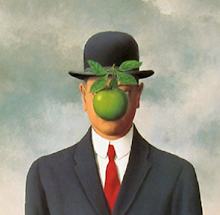I don't read the Tribune-Review for the science; I read it for the secret coded messages scattered throughout which detail a massive invasion by the Soviet Union.
On those rare instances that I do actually read an article, it is most often by accident, but I do occasionally stumble across a well reasoned and informed piece.
But not on the Editorial Page.
Case in point:
When Allegheny County Council renamed the Ninth Street Bridge to honor Rachel Carson, it had not anticipated the e-mail campaign suggesting the Earth mother of tree huggers indirectly and inadvertently caused more deaths than Hitler and Stalin combined.Way to Godwin the editorial Dimitri, he murmurs snarkily.
Continuing...
Ms. Carson's seminal work, "Silent Spring," ignited the environmental movement. It claimed that DDT was a dangerous insecticide. Carson believed excessive use in agriculture caused catastrophic consequences for animals and man.Mr. Milloy's biography from the Cato institute, where he is an adjunct scholar, is found here. As the biography indicates, he's also a columnist for that bastion of left-leaning ideologues, FoxNews.com. You can also see a bit more of his biography here.
In 1973, the Environmental Protection Agency banned all uses of DDT. Was it science or politics?
"It's a harmless chemical unless you are a bug," says Steven Milloy, author, attorney, publisher of junkscience.com and organizer of a last-minute e-mail campaign asking the local council not to rename the bridge.
"There were no adverse health effects observed. There was no scientific evidence that DDT harmed humans or wildlife. 'Silent Spring' is anecdotal." But it jump-started the movement nonetheless.
No, I can't imagine any bias, why do you ask?
Continuing from Dimitri:
"There were no adverse health effects observed. There was no scientific evidence that DDT harmed humans or wildlife. 'Silent Spring' is anecdotal." [said Millory] But it jump-started the movement nonetheless.Of course, perusing my issue of Scientific American I remember that the problem wasn't the use of DDT, but the MASS use of DDT. DDT, used to kill bugs, flows into water sources, is picked up by fish, which is eaten by, say, Bald Eagles.
The problem isn't the use of DDT, but the buildup of DDT within the food chain and ecosystem.
More from Mr. V:
When South Africa stopped using DDT, malaria rates increased about 1,000 percent, Mr. Bate said. When DDT spraying resumed in 2000, the rate fell 80 percent in 18 months. And continues falling. Details are online at www.fightingmalaria.org.Of course, the use of DDT in this case is confined to home use, not widespread spraying. You can read about it in the December issue of Scientific American... page 80. It's not online.
Although THIS is:
It also probably cannot be repeated often or loudly enough that environmentalists have not banned DDT for use against malaria. DDT has always been exempt from restrictions where its use is a matter of human public health.But hey, that's politics, not science.
Of course, I don't check the Trib opinion page for my science... or my politics for that matter.
The Soviets will invade on January 8, 1992.


No comments:
Post a Comment